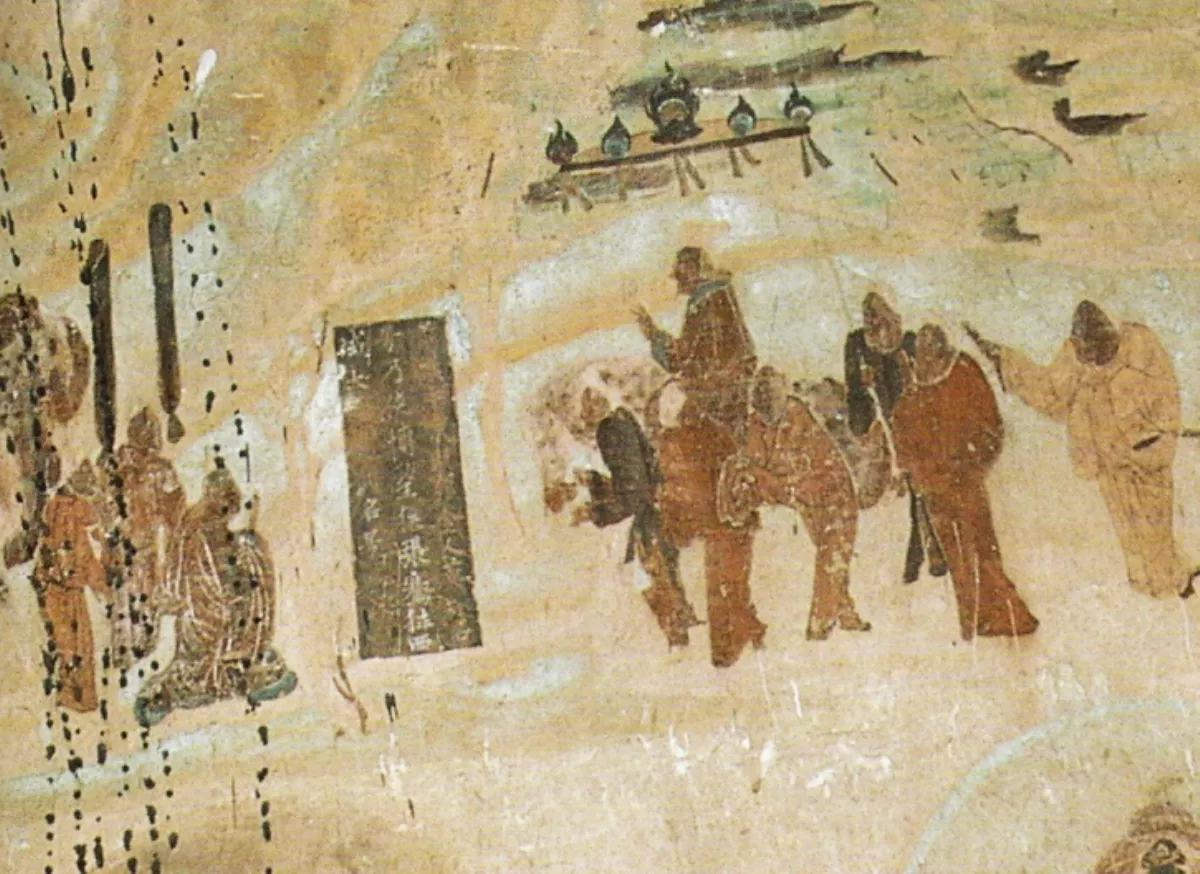 1.
1. Zhang Qian was a Chinese diplomat, explorer, and politician who served as an imperial envoy to the world outside of China in the late 2nd century BC during the Western Han dynasty.

 1.
1. Zhang Qian was a Chinese diplomat, explorer, and politician who served as an imperial envoy to the world outside of China in the late 2nd century BC during the Western Han dynasty.
Zhang Qian was one of the first official diplomats to bring back valuable information about Central Asia, including the Greco-Bactrian remains of the Macedonian Empire as well as the Parthian Empire, to the Han dynasty imperial court, then ruled by Emperor Wu of Han.
Zhang Qian played an important pioneering role for the future Chinese conquest of lands west of Xinjiang, including swaths of Central Asia and even lands south of the Hindu Kush.
Zhang Qian's travel was commissioned by Emperor Wu with the major goal of initiating transcontinental trade in the Silk Road, as well as create political protectorates by securing allies.
Zhang Qian's missions opened trade routes between East and West and exposed different products and kingdoms to each other through trade.
Today, Zhang is considered a Chinese national hero and revered for the key role he played in opening China and the countries of the known world to the wider opportunity of commercial trade and global alliances.
Zhang Qian is depicted in the Wu Shuang Pu by Jin Guliang.
Zhang Qian was born in Chenggu district just east of Hanzhong in the north-central province of Shaanxi, China.
Zhang Qian was accompanied by a guide named Ganfu, a Xiongnu who had been captured in war.
Zhang Qian spent a year in Yuezhi and the adjacent Bactrian territory, documenting their cultures, lifestyles and economy, before beginning his return trip to China, this time following the southern edge of the Tarim Basin.
Zhang Qian returned in 125 BC with detailed news for the Emperor, showing that sophisticated civilizations existed to the West, with which China could advantageously develop relations.
On his mission Zhang Qian had noticed products from an area now known as northern India.
Zhang Qian set out on a second mission to forge a route from China to India via Sichuan, but after many attempts this effort proved unsuccessful.
The reports of Zhang Qian's travels are quoted extensively in the 1st century BC Chinese historic chronicles "Records of the Great Historian" by Sima Qian.
Zhang Qian visited directly the kingdom of Dayuan in Fergana, the territories of the Yuezhi in Transoxiana, the Bactrian country of Daxia with its remnants of Greco-Bactrian rule, and Kangju.
Zhang Qian made reports on neighbouring countries that he did not visit, such as Anxi, Tiaozhi, Shendu and the Wusun.
Zhang Qian describes the origins of the Yuezhi, explaining they came from the eastern part of the Tarim Basin.
Zhang Qian was the first Chinese to write about one humped dromedary camels which he saw in this region.
Zhang Qian probably witnessed the last period of the Greco-Bactrian Kingdom, as it was being subjugated by the nomadic Yuezhi.
Zhang Qian identifies "Anxi" as an advanced urban civilization, like Dayuan and Daxia.
Zhang Qian did not himself visit the region, and was only able to report what others told him.
Zhang Qian visited directly the area of Sogdiana, home to the Sogdian nomads:.
The Shiji reports that Zhang Qian returned from his final expedition to the Wusun in 115 BC.
Zhang Qian died c 114 BC after spending twenty-five years travelling on these dangerous and strategic missions.
Zhang Qian's journeys had promoted a great variety of economic and cultural exchanges between the Han dynasty and the Western Regions.